The Golden Age of Havana Is Now
With Airbnb and Yelp already operating in Cuba's capital, will hordes of American tourists sipping McDaiquiris ruin the very authenticity that draws us to the rebel island nation? Allow us to explain why you should go now—before Cuba changes, while it changes, and because you will change it yourself.
Heading out the door? Read this article on the Outside app available now on iOS devices for members! Download the app.
In February, I was rolling in an old, squeaking taxi through Havana, headed back to my rented digs atop a house in the tiny Chinatown. I got the room in a way many travelers to Cuba will recognize: a friend passed me a phone number, which was never answered.
Eventually, days after arriving in Havana and after pursuing the owner halfway across the city in person, I booked the room, which had been available all along. That was how Cuba worked, or didn’t work. After 23 years reporting all over the island, I’d grown accustomed to the frustrating mixture of disciplined dictatorship and tropical chaos, the steady state of an island where nothing seemed to change, ever.
But travel is best in the cracks, in the unexpected encounters between appointments, in the crucial subtleties revealed when—according to our expectations and schedules—nothing is happening. So it was that night. My taxi passed by a restaurant, and I looked with exhausted envy at the warm interior, the soft lights, the well-dressed people eating from nice plates. Vibrant, disorganized music spilled out the doors, and a woman was dancing, spinning alone.
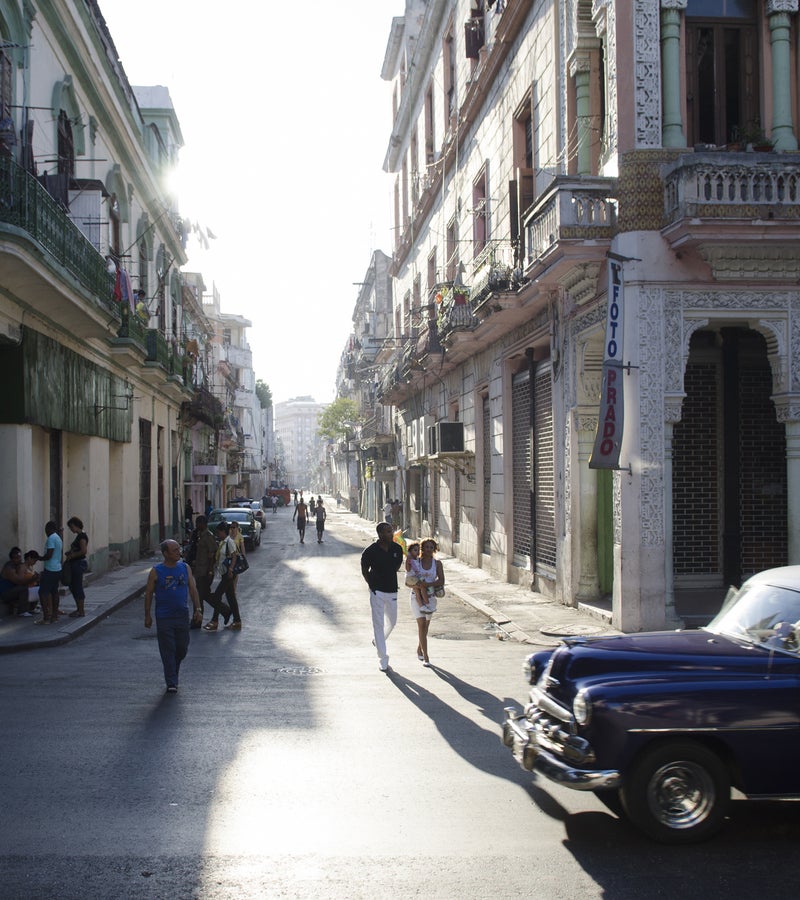
We kept moving, and I vowed to come back another day. But then a sudden doubt hit me. The place looked fun now, but would it be tomorrow? At the end of the block, I jumped out of the taxi and walked back.
The restaurant, Siá Kará Café, was unusual for Cuba, even weird: lots of cushions and low seating, eclectic decor, and a large and attentive staff serving food that arrived promptly. What’s with that? Even more unusual were the guests. I was used to Europeans and Canadians idling in the bars, but here were actual Cubans, including a pair of uniformed flight attendants for an airline I’d never heard of and a loud family celebrating something over beers and beef skewers. There was a good piano player and then a great one, playing song after song, many of them improvised or unheralded, a fusion of jazz and classical, an almost heedless performance cheered on by the increasingly drunken customers.
Was this really Havana, the grim citadel I’d been obsessing over for two decades? Was this the real Havana at last? A place as good as the legend?
Outside, cooling off, I noted the rest of the block. Dead. Dead and dark in the truly Cuban way. Both sides of the street were a long run of shuttered entrances and windows.
So what? I’d bought countless meals for Cubans in tourist places that they could never afford—or even enter—on their own. But this was the first time in 23 years I’d sat, eaten, danced on an equal footing with Cubans themselves, and it was for one simple reason: they could pay for it.
A nice restaurant, a good song, a cold drink. So what? So long to the old Cuba, that’s what.
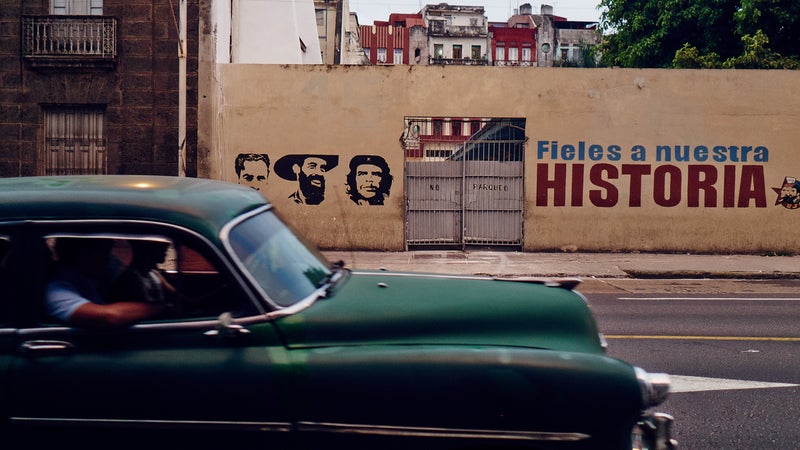
Americans always say we want to see Cuba before. We don’t really say before what.
Before it changes into something else? Before Burger King gets there, before Nike and Spotify and global Taylorism turn Cuba into just another place? This is Cuba’s dilemma. Isolation and authenticity are its greatest lures, proof that the rebel island isn’t just anywhere. But they come at a terrible price. For Cubans, the quaint sleepiness that pops up in our viewfinders is a rusted poverty. And for foreigners, nothing is ever authentic enough.
Even stomach bugs don’t plague the modern traveler as much as the nagging suspicion that this isn’t really it. The it was always some time ago, in some other place. We fear we are missing Cuba the way it was, or was supposed to be. We don’t want to be those people, the ones who arrived too late.
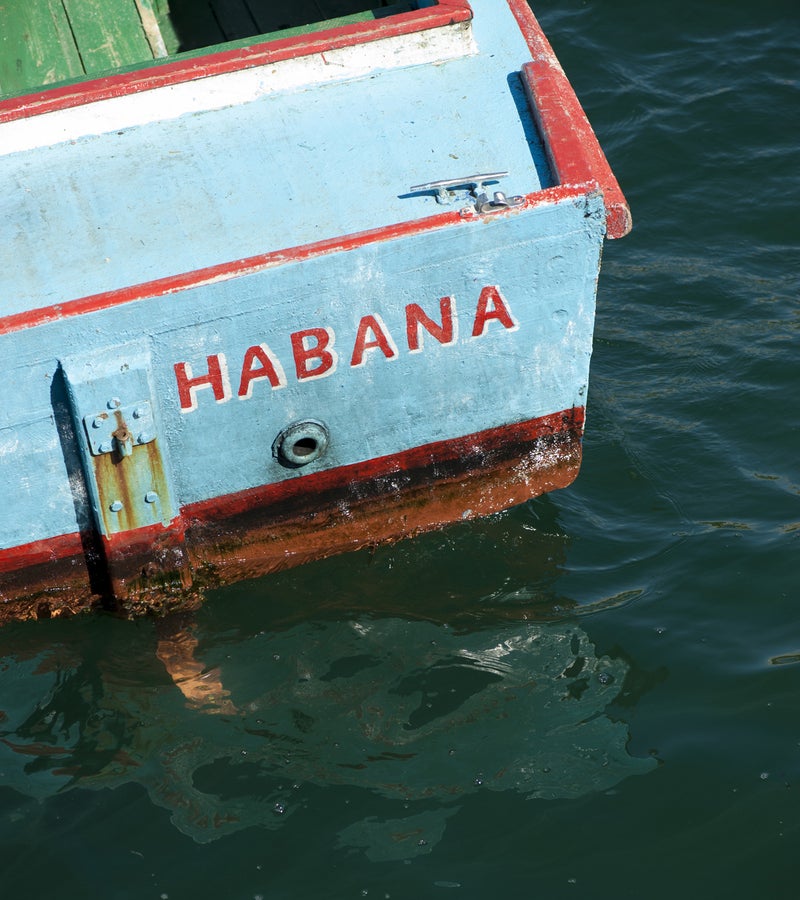
But that’s nearly impossible. Today’s jet-setter expects, as travel writer and historian Tony Perrottet told me, “to be the only traveler in a remote Amazon village, the first to find a quote-unquote untouched outpost in New Guinea. This is at the heart of the frustration travelers will no doubt feel in Cuba.”
In other words, we want to see the island before we ourselves can get there to ruin it.
Bad news: everybody but us is already there. Cuba’s 60,000 hotel rooms are booked solid by more than two million tourists each year, mostly Canadians and Europeans who spend their visits at wrist-band beach resorts that have precisely zero correlation to unspoiled anything. The U.S. severed diplomatic ties and cut off trade with Cuba back in 1961, and for decades the Treasury Department has blocked Americans from using credit cards in the country. Those who visited Cuba legally had to book educational or cultural tours that were nominally sponsored by universities or nonprofits and supervised by polite functionaries of the Cuban state tourism authority. That meant being shuttled from the Museum of the Revolution to a canned cabaret at the Tropicana, with a stop in the colonial hill town of Trinidad and one afternoon of free time to encounter a Cuba off the books. It wasn’t all so bad: in the remote town of Baracoa, I once met a busload of drunk Americans who were here legally “studying Cuban rhythm.”
But tens of thousands of U.S. citizens snuck into Havana illegally every year, passing through Cancún or Nassau. (In some years, I tallied four of those visits.) During his first term, Obama zeroed out the funding to pursue such scofflaws, and since December a cascade of travel reforms has seen JetBlue’s first flight to Havana—a nonstop from JFK for authorized travelers—and a new plan for ferry service from Key West. Florida-based Carnival Cruise Line, the largest operator on the planet, has won approval from U.S. authorities to begin biweekly landings in Cuba next May, using the Adonia, a 710-passenger ship themed around “social impact” voyages. At press time, in early August, Congress was debating lifting the trade embargo entirely. When that happens, up to a million Americans are expected to join the existing crowds.

The abrupt onset of reforms inside Cuba means that for the first time, individual, self-organized travel is becoming less onerous and expensive. A new generation of Americans will soon be able to explore Cuba at their own pace, doing things that should be perfectly routine but aren’t, like renting cars, climbing crags, or setting their own itineraries—all difficult or banned under Fidel Castro. Obama’s diplomatic opening gets much of the credit, but Raúl Castro has been making changes ever since he took the reins from his ailing brother nearly a decade ago. Only now, after years of glacial Cuban bureaucracy, have his simple economic reforms—legal self-employment, cheaper Internet access, increased rights to travel abroad, the licensing of hundreds of thousands of private businesses—begun to take effect.
As recently as 2013, I noticed little change in the day-to-day life of Cubans, but this February I was stunned to come back after two years and find the island transformed. I saw this even in small towns like Cárdenas and Sancti Spíritus, but it is most obvious in Havana, where everything seemed to have a new coat of paint, including the old cars. For decades those old Chevys and Buicks were among the few private cars in Cuba, but they are increasingly shoved aside by fleets of Korean Kias and Chinese Geelys that are easier to import for the small new business class. Some 360,000 such enterprises, from repair shops to media companies, have been licensed since 2011, and out of 11 million Cubans, a million were released from mandatory and practically unpaid state employment to earn their own living. The result has been a surge in economic growth and optimism unseen in half a century.
The tourism business was the obvious winner, and Havana in particular is booming, the hotels full and the ancient alleys thronged with foreigners. Airbnb launched last April with 1,000 members—and doubled that number in 40 days. TripAdvisor now reviews 522 restaurants in Havana alone. (About one of my favorites, the hipster bar 304 O’Reilly: “Everything was very good, which is an especially rare thing in Cuba.”) The home cafés called paladares, little places with just 12 chairs, have been superseded by large private restaurants with scores of employees and ingredients sourced from the first wave of private farms in the countryside. You already have to elbow your way through a crowd to get a mojito where Errol Flynn used to drink. But the changes go much deeper: the population is better fed, better dressed, and (crucially) sure that, with Havana and Washington both changing, their future has finally arrived.
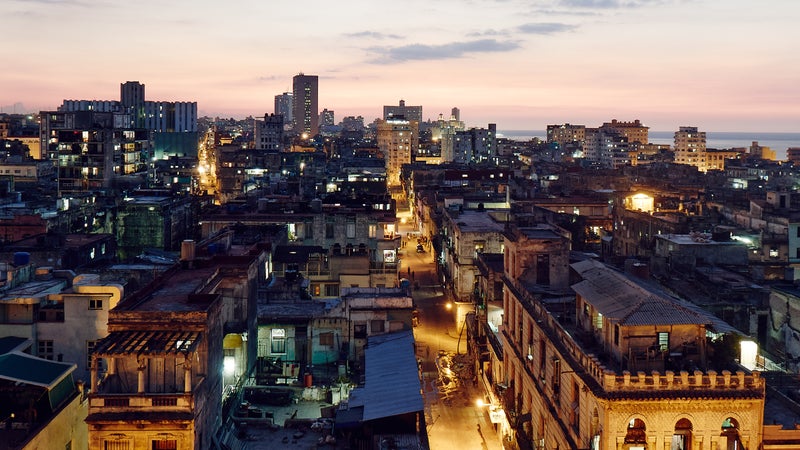
I never fell in love with Cuba, not quite. My first visit, in 1991, was mercenary, a writer’s attempt to find a story no one else was seeing. The Cuban Revolution may have started with a giant party, but long before I arrived it became a dead hand on Cuban life, the easygoing, tropical version of a Warsaw Pact summer vacation. That first trip, I slept in a spartan “national” hotel in Havana that cost just $7 a night and came with a radio and an air conditioner labeled in Cyrillic. In 1993, in Cienfuegos, a once elegant sugar port on the south coast, food was so scarce that I waited in line for an hour and was questioned by two plainclothes cops before I was allowed to eat a small dish of paella. Flavored with iron and diesel, it was unforgettably the worst meal of my life—and yet a privilege in a country that was starving. Back in Havana, I watched two dogs fight to the death for a tiny pile of garbage.
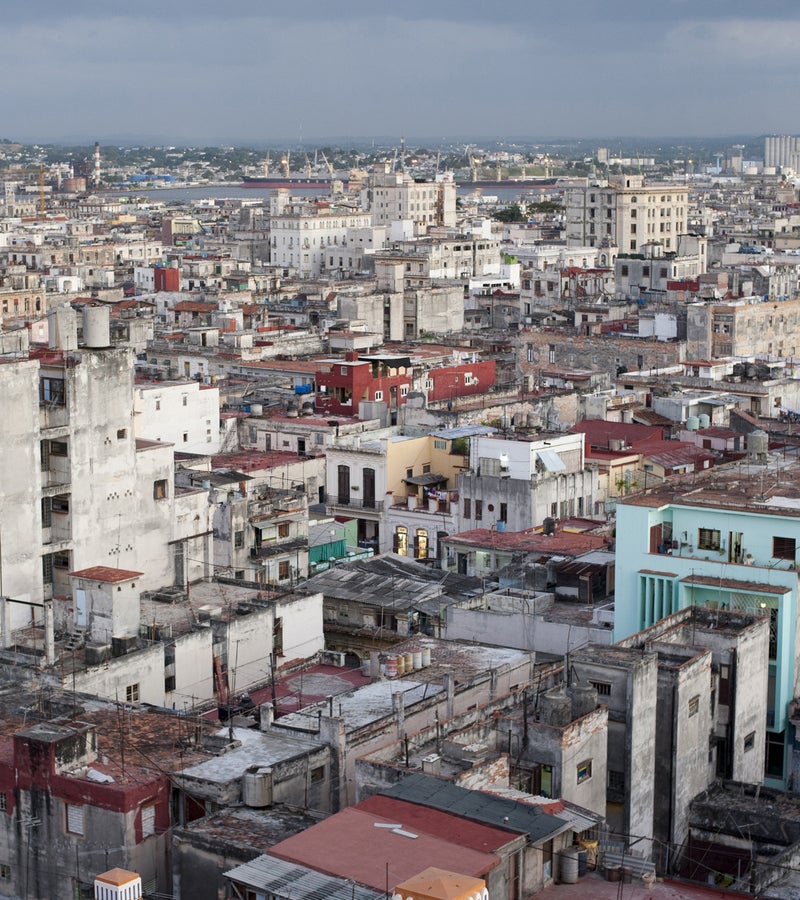
Those were the hunger years, but for two decades I came back, inspired and awed by the ability of Cubans to not just survive but adapt and even thrive. I chronicled the island’s weaknesses—that would be the commie dictatorship, the repression of human and political rights, the petty controls over every aspect of life. But I also found and described strengths. I wrote about the stunning oceans and untouched coastlines, benignly neglected for decades by a revolution that could provide no gasoline and whose fishing boats disappeared routinely to Key West. I once lived for a month in Havana on the average Cuban salary, which amounted to dimes a day—an exercise in hunger but also solidarity. Cubans gave me a lesson in survival and an answer to why the best people live in the worst places.
Two books emerged from my obsession—one on Che Guevara, another on Fidel. Cuba’s edge was darker than other places, if less sharp. The benefits of free education and health care, as well as a ruthless police state, drowned out all opposition, and Havana in the nineties was a city of whispering and petty corruption, squalid deals and transparent jockeying for plates of chicken. Everyone lied every day. If you could swim in this queer pool, it was an unforgettable experience.
But was it authentic? No. Foreigners want a Cuba that doesn’t change, but Cubans want exactly that: change. “They want their iPhones,” says Alfredo Estrada, the Cuban-American author of Havana: Autobiography of a City. “They’ve been living in a very unnatural state of isolation, and they want to join the global community,” to get “very modern very quickly.”
We want them to keep driving those cute old cars. We’re nostalgic for a Cuba that shouldn’t exist—constrained by our embargo and crippled by dictatorship. Estrada calls the desire to visit an unchanged Cuba patronizing, as if the island is a museum, not a nation entitled to a future.

That future, he says, should include the careful preservation of all that does make Cuba distinct. Some of the first towns built in the Americas are here, including Santiago de Cuba, now the island’s second-largest city, a charming Caribbean destination despite losing much of its early architecture in fires and earthquakes. Havana, once the New York City of Latin America, avoided wholesale redevelopment after 1959 in “a fortunate accident,” says Estrada. “So let’s prolong the accident, because that’s what’s going to draw people to Havana. Keep the beauty and it will bring a lot of prosperity to the people of Havana.”
Foreigners still can’t buy real estate, but someday hotel companies and investors will snatch up the properties now moldering in historic parts of Cuba, and choice Old Havana houses may be worth millions in ten years. The Cuban government has mostly protected ordinary residents from displacement, but that will probably change. “A lot of those people are going to get screwed,” Estrada says with a sigh, before adding, “Hopefully not.”
But Havana, along with Cuba as a whole, is deservedly ripe for improvements. Much of Old Havana has been without running water for decades. The famous Malecón seafront promenade is in desperate condition, even abandoned in parts. “You are going to have all the usual tourist crap,” Estrada acknowledged, “but with that will come economic development, growth, restaurants, vendors. And it’s not just the physical hotels—it’s the industry, the people, the systems.”
“Go,” Estrada tells people. “Go as soon as possible. Who knows what will happen in five or ten years, what kind of transition will occur? Go now.”
Simple advice. We should go to Havana, not before it changes but so that it does change. So that it can change. The most authentic Cuba is the one still to come.
My own Cuban fantasy isn’t the daiquiri mulata, made with crème de cacao, or an old Nash Rambler rumbling slowly through the rugged streets. There was always a time before we got there, but the past is easy in Cuba. What I want is the next chapter.
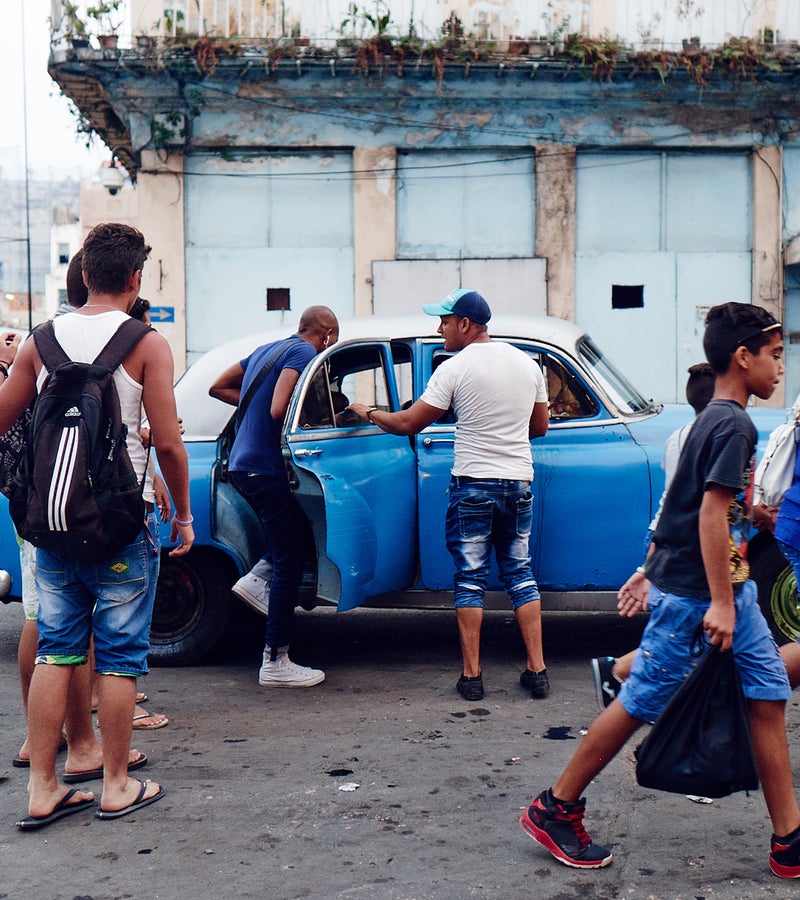
Once, a few years ago, I set off across Old Havana with Estrada’s history of the city in hand, reading as I walked, crossing from the founding stones at the Plaza de Armas to the extramural, literally the outside-the-walls development of the modern metropolis. This old colonial city, the largest remaining in the hemisphere, was belted with defensive walls in the late 17th century, some of which are still visible among the bars of Montseratte Street. Havana continued growing outward, an encyclopedia of architecture, often on the same block, with turn-of-the-century Baroque and Catalan Art Nouveau, Mudéjar movie palaces from the early 20th century, and an ambitious blast of 1950s Modernism, like the insanely atmospheric Riviera Hotel, a casino built by gangster Meyer Lansky far from the prying eyes of the FBI. This built history is the single most unshakable thing about Cuba, but the revolution added almost no gestures of its own to the city—the empty Plaza of the Revolution, the never-finished National Art School, and a few monuments to Che. The power elite preferred a modest setting like El Aljibe, a restaurant thatched like a peasant hut that still serves the best black beans and orange-marinated chicken in Cuba.
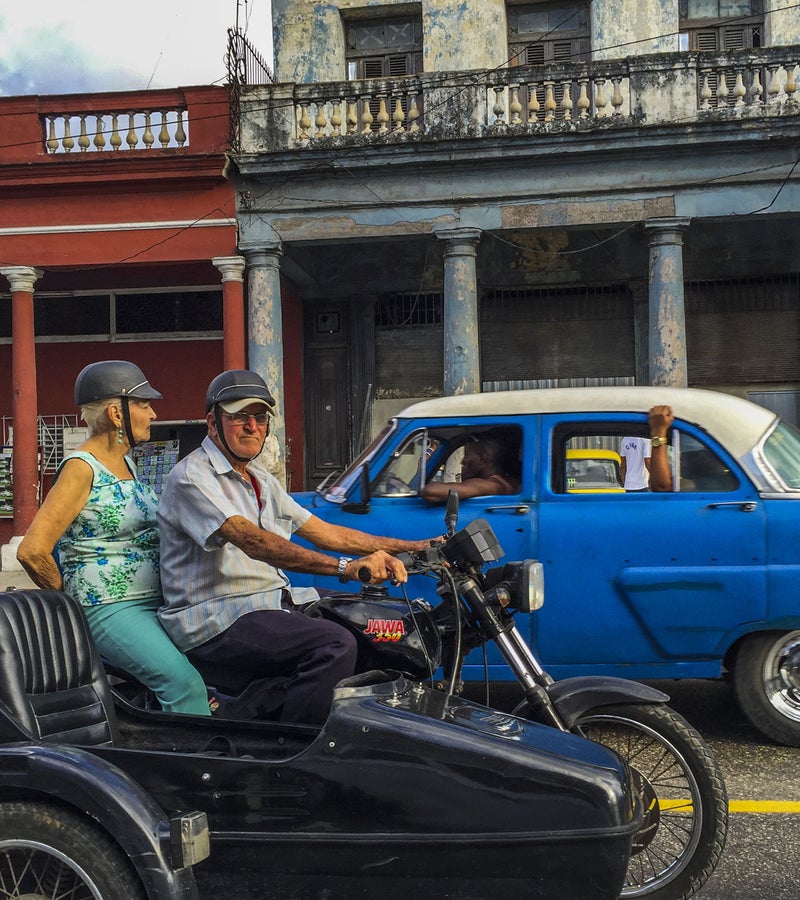
The pickled authenticity of Old Havana and a few magnets like Trinidad, a Unesco World Heritage town to the southeast, will change quickly under the assault of decentralized tourism. But most of Cuba needs change. Continue just a mile or two from the gentrified zone along Obispo Street and you’ll find plenty of untouched, neglected authenticity, like El Cerro, where wrecked 19th-century mansions decorated with laundry spill down a long road, people living as if they have no holes in their roofs. Tourism has had little effect on such places. You can drink a thimble of sweet coffee from a street vendor and see no other foreigners, no matter how long you wait. Sometimes raw El Cerro feels more authentic than polished Old Havana.
Still, it can be hard to tell the real from the fake. Santería, the Afro-Cuban religion, is packaged nightly for tourists in Nikon-friendly events. A Cuban devotee assured me that this was faux Santería, not the true thing. Yet the chaotic, sweat-soaked home ceremonies I’d attended over the years were much the same: crowded initiation rites and birth celebrations that weren’t complete without rum, demonic possessions, and gifts of cash. What about the Riviera, for that matter? It was confiscated by the Castro government in 1959, but Lansky would be proud: it’s still a notorious hotel full of prostitutes, just like he always wanted.
Every walk around Havana unspools 500 complex years. In 15 minutes you pass from the stones laid by conquistadores to la esquina caliente, the “hot corner,” where men argue baseball all day. A few blocks and half a millennium later you’re in El Floridita, where they serve the Hemingway daiquiri, a double made with grapefruit juice and (gasp!) no sugar at all.
Hemingway spent decades on the island, and called himself a sato, a run-of-the-mill Cuban. But I don’t know what he was thinking. Why would you want Cuba without the sweet stuff?
Contributing editor Patrick Symmes (@PatrickSymmes) is the author of Chasing Che, The Boys From Dolores, and the forthcoming The Day Fidel Died.


